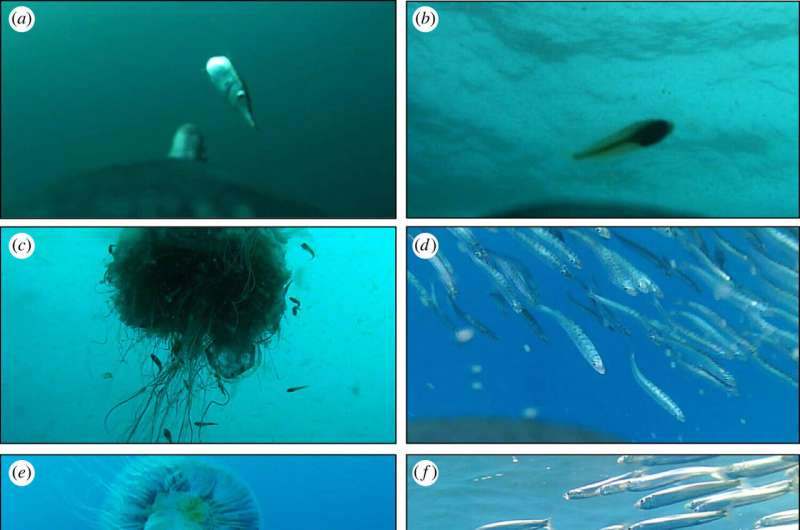September 4, 2023 report
This article has been reviewed according to Science X's editorial process and policies. Editors have highlighted the following attributes while ensuring the content's credibility:
fact-checked
peer-reviewed publication
trusted source
proofread
Tracking little penguins shows they make trade-offs between minimizing energy costs and increasing capture rates

A trio of marine researchers at Deakin University's School of Life and Environmental Sciences in Australia has found that little penguins attempt to optimize their predatory behavior by making trade-offs between minimizing energy costs and increasing capture rates. In their study, reported in the journal Royal Society Open Science, Natalie Petrovski, Grace Sutton and John Arnould attached tiny video cameras to several of the penguins to study their hunting behavior.
Most wild animals with a varied diet engage in a constant tradeoff between energy expenditure and prey choice—going after a speedy rabbit, for example, burns a lot of calories for a coyote. Instead, it might choose to eat berries off a bush. Such behavior has been seen in marine animals, too—sharks may choose to attempt to chase down a sea lion for a big payoff, or nosh on easy-to-catch crustaceans or mollusks.
In this new effort, the research trio focused their attention on the little penguins that inhabit the Bass Strait, which lies between the southern coast of Australia and the northern coast of Tasmania. Prior research has suggested that two major colonies live in the strait and have a population of between 85,000 and 152,00 breeding pairs. Prior research has also shown that little penguins are opportunistic—they eat a wide variety of prey, mostly due to proximity or availability.
To learn more about little penguins and their feeding habits, the researchers captured and affixed video cameras to several specimens (some were also fitted with transponder tags) and then released them in the area where they had been captured. Data from the cameras was retrieved by recapturing the penguins and removing the cameras.
The research team found that little penguins consumed seven main types of prey, one of which was the bellowsfish. This was a surprise because they typically hide under jellyfish. The researchers found that the little penguins also used different strategies for capturing prey that had not been seen before. Some videos appeared to show that the little penguins were making tradeoffs between minimizing the amount of energy needed to capture a targeted prey, the rate of success and the ultimate payoff.
More information: Natalie Petrovski et al, Energetic consequences of prey type in little penguins ( Eudyptula minor ), Royal Society Open Science (2023). DOI: 10.1098/rsos.221595
Journal information: Royal Society Open Science
© 2023 Science X Network




















